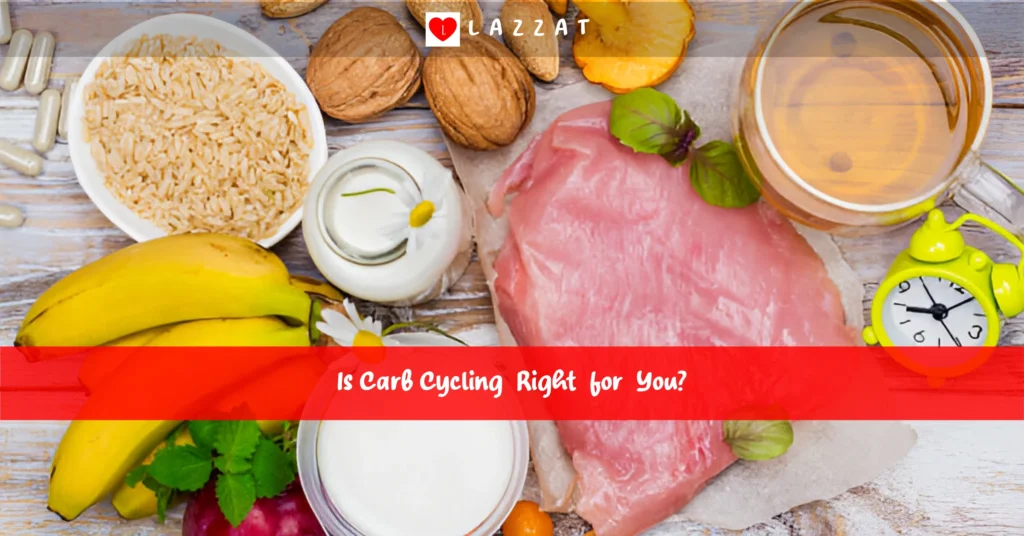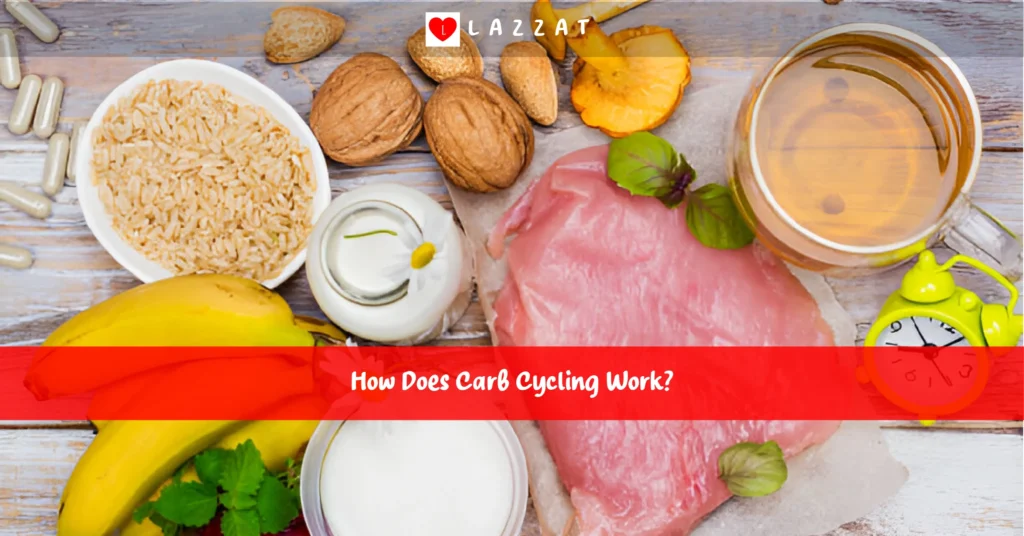What Is Carb Cycling and How Does It Work?
- mylazzat
- Carb Cycling, What Is Carb Cycling
- 0 Comments
Struggling to lose fat without feeling drained? Carb cycling might be the solution you’ve been missing. Unlike strict low-carb diets that leave you sluggish or high-carb plans that stall weight loss, carb cycling offers a balanced approach. It’s used by athletes, fitness enthusiasts, and even busy professionals to burn fat, build muscle, and boost energy—without extreme restrictions.
But how does it actually work? Let’s break it down.
Table of Contents
What Is Carb Cycling?
Carb cycling is a strategic eating plan where you alternate your carbohydrate intake based on your activity level. Some days you eat more carbs (usually on workout days), and other days you cut back (on rest days). The goal? To match your energy needs while optimizing fat loss and muscle growth.
The Science Behind It
Carbs fuel your body, especially during intense workouts. On high-carb days:
- Glycogen stores are replenished.
- Insulin sensitivity improves.
- Your body gets the energy it needs for performance.
On low-carb days:
- Your body taps into fat stores for fuel.
- Insulin levels stay stable, reducing fat storage.
It’s not a one-size-fits-all diet—it’s flexible and customizable, making it easier to stick to than rigid plans like keto.
How Does Carb Cycling Work?
Carb cycling follows a simple principle: Eat more carbs when you need energy, fewer when you don’t. Here’s how it breaks down:
High-Carb Days
- When? On intense training or heavy workout days.
- Why? Carbs refuel glycogen, repair muscles, and boost recovery.
- How many carbs? Typically 2–3 grams per pound of body weight.
Low-Carb Days
- When? On rest days or light activity days.
- Why? Encourages fat burning without sacrificing muscle.
- How many carbs? Around 0.5–1 gram per pound.
Moderate-Carb Days
- When? On moderate activity days (like yoga or walking).
- Why? Balances energy without overloading on carbs.
- How many carbs? Roughly 1–1.5 grams per pound.
Macronutrient Breakdown (Example for a 150-lb Person)
| Day Type | Carbs (g) | Protein (g) | Fats (g) |
|---|---|---|---|
| High-Carb | 300–450 | 120–150 | 50–60 |
| Low-Carb | 75–150 | 120–150 | 70–80 |
| Moderate | 150–225 | 120–150 | 60–70 |
(Adjust based on your weight and goals!)

Benefits of Carb Cycling
Why do athletes and fitness buffs swear by carb cycling? Here’s what makes it stand out:
Fat Loss Without Starvation – Unlike crash diets, you’re not constantly hungry. Low-carb days burn fat, while high-carb days keep metabolism active.
Muscle Preservation – High-protein intake + strategic carbs prevent muscle loss during cuts.
Better Workout Performance – More energy on training days means harder, more effective sessions.
Metabolic Flexibility – Trains your body to switch between carbs and fat for fuel efficiently.
No “Diet Fatigue” – Less restrictive than keto or traditional low-carb diets.

Carb Cycling vs. Other Diets
How does it compare to popular diets like keto or IIFYM?
| Diet | Carb Approach | Flexibility | Best For |
|---|---|---|---|
| Carb Cycling | Varies daily | High | Fat loss, muscle retention |
| Keto | Very low (5%) | Low | Rapid fat loss, epilepsy management |
| Low-Carb | Consistently low | Medium | Steady weight loss |
| IIFYM | Flexible, no cycling | Very High | Flexible dieting |
Verdict: If you want structure without extreme restriction, carb cycling is a great middle ground.
How to Start Carb Cycling (Step-by-Step Guide)
Ready to try it? Follow these steps:
- Set Your Goal
- Fat loss? More low-carb days.
- Muscle gain? More high-carb days.
- Calculate Your Macros
- Protein: 1–1.2g per pound (keeps muscles intact).
- Fats: 0.3–0.5g per pound (supports hormones).
- Carbs: Adjust based on activity (see table above).
- Plan Your Cycle
- Example for fat loss:
- 3 low-carb days
- 2 high-carb days (workout days)
- 2 moderate days
- Example for fat loss:
- Pick the Right Foods
- High-carb: Oats, sweet potatoes, rice, quinoa.
- Low-carb: Chicken, fish, eggs, leafy greens, avocado.
- Track & Adjust
- Use an app (MyFitnessPal, Cronometer) to monitor intake.
- Adjust carbs if you feel sluggish or aren’t seeing progress.
Sample Carb Cycling Meal Plan
High-Carb Day (Workout Day)
- Breakfast: Oatmeal + banana + peanut butter
- Lunch: Grilled chicken + rice + veggies
- Post-Workout: Protein shake + sweet potato
- Dinner: Salmon + quinoa + roasted broccoli
Low-Carb Day (Rest Day)
- Breakfast: Scrambled eggs + spinach + avocado
- Lunch: Turkey lettuce wraps + almonds
- Snack: Greek yogurt + chia seeds
- Dinner: Steak + asparagus + olive oil drizzle
Common Mistakes to Avoid
Overeating on High-Carb Days – Just because you can eat more carbs doesn’t mean you should go wild. Stick to your macros.
Ignoring Protein – Carbs get attention, but protein is key for muscle retention.
Not Adjusting for Activity – A rest day ≠ a high-carb day. Match intake to energy output.
Inconsistent Tracking – Guessing leads to stalled progress. Measure portions, especially early on.
Is Carb Cycling Right for You?
Who Should Try It?
✔ Active individuals (athletes, gym-goers)
✔ Those struggling with weight loss plateaus
✔ People who hate strict diets but want structure
Who Should Avoid It?
✖ People with diabetes (unless supervised by a doctor)
✖ Those with a history of disordered eating
✖ If you prefer simple, no-tracking diets

Conclusion:
Carb cycling isn’t a magic diet, but it’s a smart, flexible approach to eating that can help you lose fat, maintain muscle, and perform better in the gym. Unlike extreme diets, it allows for strategic indulgences, making it easier to stick to long-term.
Key Takeaways:
✔ Alternate carb intake based on activity levels.
✔ High-carb days fuel workouts; low-carb days burn fat.
✔ Protein remains high to protect muscle.
✔ Track and adjust—what works for others may not work for you.
Ready to give it a shot? Try a 2-week carb cycling plan, monitor your energy and progress, and see how your body responds. You might just find your ideal eating strategy!
Also Read: What is the Best Diet for Muscle Growth?
FAQs
Does carb cycling help with weight loss?
Yes! By alternating high and low-carb days, your body burns fat more efficiently while maintaining energy. Many people find it easier to stick to than traditional diets because it’s less restrictive.
How many carbs should I eat on high-carb days?
It depends on your weight and activity level, but a general rule is 2–3 grams of carbs per pound of body weight on intense training days.
Can carb cycling improve athletic performance?
Absolutely. High-carb days fuel intense workouts, while low-carb days enhance fat adaptation—great for endurance athletes and strength trainers alike.
Is carb cycling good for women?
Yes, but women may need to adjust based on hormonal fluctuations. Some find better results with more moderate-carb days to avoid energy crashes.
How long should I try carb cycling before seeing results?
Most people notice changes in 2–4 weeks, but consistency is key. Track progress and tweak your plan as needed.]
